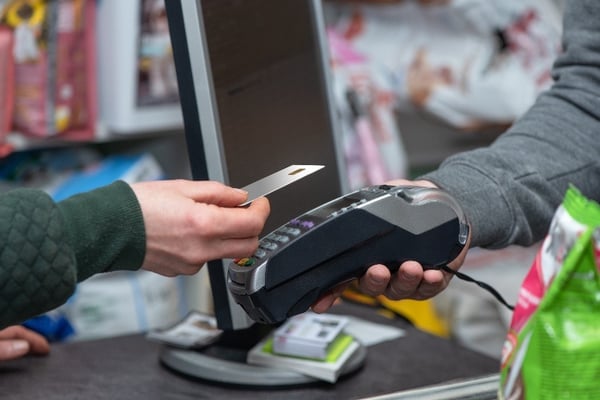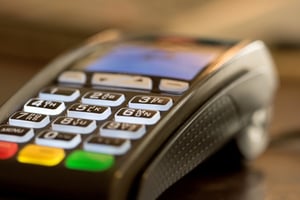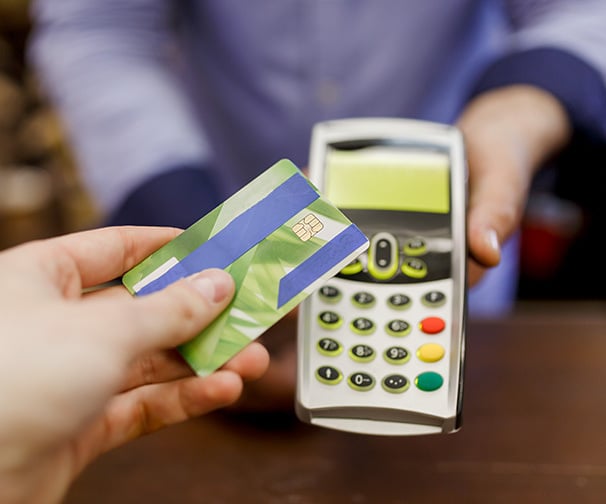By definition, a chargeback is, “a credit card transaction reversal meant to serve as a form of consumer or business protection from fraudulent or disputed activity committed by both merchants and individuals.”
What does that mean?
In simple terms, a chargeback is a customer’s claim that the product or service purchased on their credit card was not purchased by them, was purchased without their knowledge, was never received, or was not satisfactory.
Key Takeaways You Will Get From This Article
1. Friendly fraud is the term used for a specific type of credit card fraud in which the perpetrator is actually the cardholder, not an identity thief. It’s also known as chargeback fraud.
2. An authorized cardholder who commits friendly or chargeback fraud abuses loopholes in the system by disputing legitimate charges made to their account, which pushes their bank to force a refund under the pretense that the merchant made a mistake.
3. It’s important to keep diligent records of transactions in case you ever have to deal with a chargeback dispute. You can never collect too much information.
4. It is absolutely essential to partner with a processor that you trust, they will be representing you in the event of chargeback fraud.
A chargeback can be the result of identity theft or a stolen credit card, but this isn't always the case. In fact, studies have shown that 86% of all chargebacks are probable cases of "friendly fraud".
These same studies also revealed that friendly fraud increases at a rate of 41% every two years and roughly 40% of consumers who commit friendly fraud will do it again within 60 days.
In this post, we'll discuss everything you need to know about chargebacks and friendly fraud as a small business owner. Choose a section from the table of contents below, or start from the top of this complete guide.
Table of Contents
- What is Friendly Fraud?
- How to Protect Your Business from Chargeback Fraud
- Fighting Chargeback Fraud
- How to Dispute a Chargeback
- Choose the Right Payment Processor
What is Friendly Fraud?
We know what you’re thinking. How could fraud ever be considered “friendly”?
It’s not, really. Friendly fraud is the term used for a specific type of credit card fraud in which the perpetrator is actually the cardholder, not an identity thief. It’s also known as chargeback fraud.
An authorized cardholder who commits friendly or chargeback fraud abuses loopholes in the system by disputing legitimate charges made to their account, which pushes their bank to force a refund under the pretense that the merchant made a mistake.
For example, let’s say you run a pet supply store.
To appeal to your busy, pet-loving customers, you sell your merchandise both online and in-store. A customer orders a new leash for their dog from your online store using a credit card.
Once their order is delivered, they request a chargeback from their bank. The customer can claim a variety of reasons for requesting the chargeback, such as:
- They did not receive the leash.
- A family member ordered the leash without them knowing.
- They do not recall making the purchase.
- They were not informed of your company’s terms and conditions prior to placing the order.
If you kept detailed records of the transaction, you may be able to dispute the chargeback successfully.
For instance, you could use the shipping receipt signed by the customer as proof of delivery if a signature was required.
You could also demand that the leash be returned, but keep in mind that dealing with a dishonest customer will be no easy task. If things escalate, the customer could be tempted to post negative reviews about your store and potentially cause irreparable harm to your business.
In many cases, the product loss caused by a friendly fraudster is much less expensive than the cost of a court proceeding.
Therefore, many businesses treat friendly fraud as a necessary evil, and some even account for it in their operating costs.
Your pet supply store deserves better than that. You work hard to provide your customers with equipment, food, treats, and toys for their furry friends and you should be able to keep that revenue in the till. It’s true that friendly fraud happens and probably always will, but what if there was something you could do to prevent it?
How to Protect Your Business from Chargeback Fraud

It will be difficult to halt chargeback fraud completely, but there are preventative measures you can take to keep your money where it belongs. Let’s look at the red flags, along with some preventative steps you can take for both in-store and online purchases.
Point of Sale Red Flags
First, let’s review some of the top credit card red flags to watch for at the point of purchase. If your cashier experiences one or more of these things, it is possible the customer is attempting to make a fraudulent purchase.
-
- Customer makes a large purchase without paying a normal amount of attention to the item details or price.
- The customer tries to rush or distract the cashier.
- Customer pulls their credit card from their pocket rather than a wallet or purse.
- Customer asks the cashier to manually enter the card number rather than process the chip.
- Chip will not read.
- Customer is unusually slow or deliberate with their signature.
If you are still swiping credit cards, you need to update your equipment immediately.
Almost all cards today have an embedded chip, which offers added security for you and the cardholder. If you receive a chargeback for a card that was swiped instead of inserted into the chip reader, the sale automatically becomes a chargeback.
The cost to upgrade equipment is minimal, and an absolute necessity to protect your business. Contact us if you need help choosing modern equipment!
It's important to keep in mind that fraud liability today is always shifted to the party (bank or merchant) with the lower level of security. Therefore, if you do not have an EMV chip-enabled card reader, you are at higher risk for being held responsible for fraud committed through your store.
Stay One Step Ahead of Fraudsters
Some friendly fraudsters know the chargeback system and preventative measures merchants take to protect their business. These people may purposefully damage the magnetic strip or chip on their credit card, in the hopes of forcing the cashier to type in the card number or swipe instead.
If you are presented with a chip card that will not read, ask for another method of payment.
Even if it is a legitimate customer whose card just had an unfortunate encounter with the washing machine, it is always better to be safe than sorry.
You should also make sure to have security cameras installed in your store. They’re a good idea for general safety, and although video footage cannot be included in a chargeback representment case, a still image from the video can provide additional proof that the cardholder made the purchase.
Try to gather as much information from the customer as possible on each and every sale. Verify their signature by comparing their driver’s license and back of the card and if possible, manually record their license number or other ID on your copy of the receipt.
Tips for Preventing Fraud Online
It can be difficult to gather information from customers purchasing online, especially if they are making the purchase with the intention of charging it back.
Since you are not capturing a signature, you’ll be fighting a more difficult battle and should take every precaution you can to prevent chargeback fraud. Here are some preventative measures to try:
-
- Follow the protocols for card-not-present transactions supplied by your payment processor. These may require you to capture information such as the customer’s IP address, use AVS and CVV verification, or require a signature from your customer as proof of delivery.
- Use a recognizable DBA on your merchant account so customers can easily identify your business on their credit card statement. A common form of unintentional friendly fraud is when a customer does not recognize a transaction on their credit card statement and reports it as a suspicious charge.
- Offer incredible customer service to prevent a complaint from turning into a chargeback. Listen to the customer’s complaint and do everything you can to provide a reasonable solution. Even issuing a refund can cost you less than a chargeback.
- Identify online order red flags. Take a second look at unusually large orders or anything that isn’t considered a “normal” order for your business. If you see multiple failed order attempts from the same customer, that may be an indication that they are using a stolen card.
- Be transparent about your policies. Make sure each customer will have plenty of opportunity to read your terms and conditions to prevent the likelihood that they will claim they were uninformed.
- Follow the protocols for card-not-present transactions supplied by your payment processor. These may require you to capture information such as the customer’s IP address, use AVS and CVV verification, or require a signature from your customer as proof of delivery.
Again, you can never collect too much information. It’s important to keep diligent records of transactions in case you ever have to deal with a chargeback dispute.
Fighting Chargeback Fraud

Chargebacks are a threat to all businesses. Here are six things you can do to stay ahead of them:
-
- Open every letter from your payment processor.
- Monitor your processor’s payment portal daily.
- Gather any and all documentation related to a questionable transaction.
- Contact the customer if appropriate.
- Respond to chargeback notifications immediately.
- Decide if you want to fight the chargeback.
Your Position in the Chargeback Process
It may not be worth your time or money to fight every chargeback. However, if you feel that there is cause for a dispute against suspected fraud, you can file one.
To better understand your position in the chargeback dispute process, let’s look at the steps.
STEP 1: The cardholder calls the toll-free number on the back of their credit card to report the charge. If their report is accepted, the cardholder is given a provisional credit by the bank.
STEP 2: The bank that issued the credit card withdraws the funds from the merchant’s payment processor.
STEP 3: The merchant’s processor withdraws the funds from the merchant (that's you).
STEP 4: The merchant (you) gathers all pertinent documentation and then submits a chargeback dispute.
STEP 5: The merchant’s processor presents the merchant’s dispute to the cardholder’s bank.
STEP 6: The merchant’s dispute is then either accepted or rejected. If accepted, the funds are deposited back into the merchant’s bank account. If the dispute is rejected, the cardholder’s provisional credit becomes a permanent credit.
There are two important things to note here.
First, not all disputes result in a chargeback debit. Your payment processor will research the transaction in question to determine if the chargeback was requested within the allowable timeframe and represent you to the customer’s bank.
That brings us to the second notable point from this dispute process.
Since your processor will be representing you in these proceedings, it is absolutely essential to partner with a processor that you trust. Do your research and find a processor that is reputable, proactive, and truly cares about serving your business.
How to Dispute a Chargeback
Chargeback representment is the process a merchant uses to dispute a chargeback.
It offers you the opportunity to plead your case, prove the chargeback was not legitimate, and retrieve the funds that rightfully belong to you.
To preserve your representment rights, you must respond to chargebacks in a timely manner. This is why we recommend checking your payments portal every day and opening any letter from your processor right away.
You’ll also only have one opportunity to represent the chargeback, so make sure you gather every piece of possible evidence you can to build your case.
This is again why it is so important to request or record as much customer information as possible. It is always better to be over-prepared than under-prepared when it comes to protecting your business.
The current representment timeframes for major card companies are as follows:
Visa – 30 Days
MasterCard – 43 Days
American Express – 20 Days
Discover – 20 Days
Keep in mind these are calendar days, not business days.
Should You Dispute a Chargeback?
Before deciding to move forward with the chargeback representment process, consider the following:
- Why is the cardholder charging back the purchase? Understand the chargeback code (never received the product or service, doesn’t recognize the charge, not satisfied with quality, etc.) to help you try to determine if it is fraudulent, legitimate, or a simple misunderstanding.
- Is the amount of the chargeback worth the fight? If it’s only for that leash that was purchased from your pet supply store, it may not be worth your time.
- Do you have sufficient evidence that the cardholder made the transaction? Check your records and security cameras thoroughly.
- Have you done all you can to solve the issue with the customer directly? Sometimes a chargeback is the result of a simple misunderstanding.
What Happens if You Lose?
If you lose the dispute, you will also lose those funds associated with the chargeback. However, if you are absolutely positive you have been swindled, there are additional options. For example, you can file for arbitration with the credit card company.
All major credit card companies have different rules and processes for arbitration, so do your research before filing and know what you’re getting into. You also have the option to utilize the judicial system by filing a police report, pressing charges, and taking the fraudster to court.
We recommend turning to these options only if the chargeback is going to cause you an extreme loss, as conducting legal proceedings becomes very expensive very quickly.
Choose the Right Payment Processor

It’s sad, really, to think that there are customers who may come to your business intending to steal from you.
We’re not here to discourage you, because for every backwards Robin Hood that walks up to your counter, there are many customers who genuinely want to purchase the products or services you offer. However, if your business accepts credit cards, friendly fraud is an unfortunate reality.
That’s why it’s important to have a trustworthy partner by your side.
Electronic Merchant Systems is a leading provider of payment processing and merchant services, servicing tens of thousands of retail, internet, and start-up businesses across the nation.
We take the time to get to know your business before recommending the best, most secure payment processing solution for you. Our countertop terminals and POS systems are equipped to accept EMV chip cards, mobile wallets and contactless options, checks, EBT, gift cards, and loyalty cards. We are also a Level One PCI Compliant company, so you can rest assured that your data is always safe with us.
If you want to avoid chargebacks and are interested in partnering with a payment processor who has your best interests in mind, contact us today!




